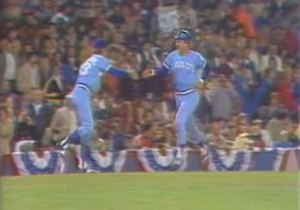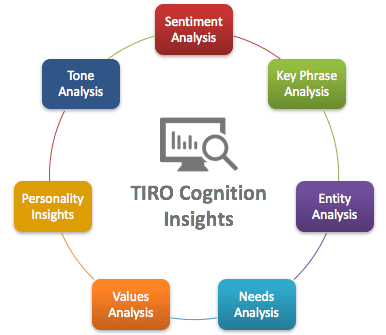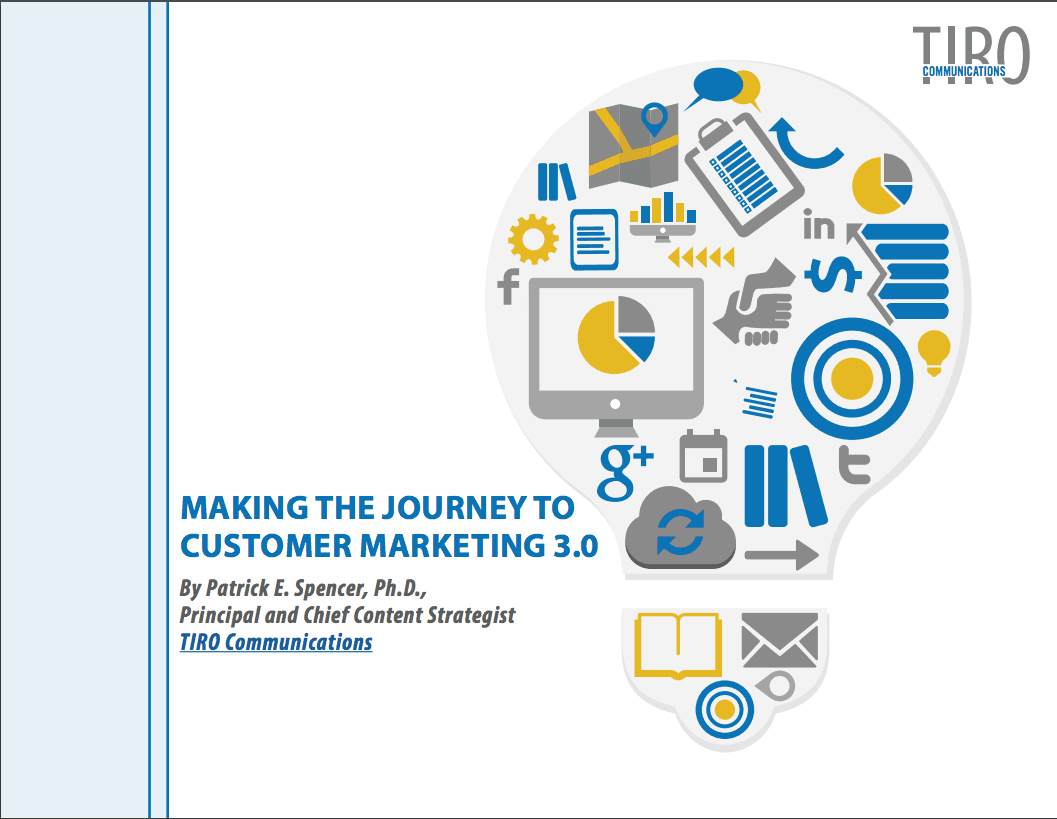A Content Strategy Lesson from the 2014 KC Royals
- By Patrick Spencer
- •
- 04 Oct, 2014
- •
3 Content Marketing Lessons

When growing up in western Kansas in the late 1970s and early 1980s, the highlight of the long summer days while working in the fields was the KC Royals game that normally aired at 7:05 p.m. We didn't realize it at the time, but we were spoiled. Nearly every year for more than a decade, the Royals competed for the Division title and League championship—and twice for the World Series. The Royals were built on solid hitting, speed, and pitching; they had the best hitter—George Brett—and best reliever—submariner Dan Quisenberry— in baseball. The team's farm system had few rivals, producing a slew of talented hitters and pitchers.
Finally, past the "hated" NY Yankees
For three straight years, from '76 to '78, the Royals won the AL West but lost to the NY Yankees in the League Championship. Neither the Yankees nor Royals won their respective divisions in '79 but were both back at the top in '80.
After so many disappointing season finales, all at the hands of the Yankees, Royals' fans approached the League Championship series with trepidation, fearing a repeat of earlier years. But the Royals were not to be thwarted by the Yankees again. They won the first two games of a five-game series and swept the series when Brett hit a three-run home run into the upper deck of old Yankee's stadium off storied Yankee's reliever Goose Gossage. Forced to sit Brett for part of the World Series when he developed hemorrhoids, the Royals lost to the Philly's in six games. But no one really cared; simply getting there is all that mattered (and the fact they finally had beaten the hated Yankees).
There was something special about the '85 Royals, which combined many from the cast of the '80 World Series' team with some new budding stars. Few gave them much of a chance to win the League Championship or the World Series. And it appeared the seers would be right: the Royals were down three games to one in both series. But the team somehow came back, in near miraculous fashion, to win both series.
Lost identity and focus
Having finally reached the pinnacle and with a young team of budding stars and a farm system full of prospects, the future was very bright for the Royals. But something happened; they began to change their strategy, signing big name free agents who flopped and assembling teams that were simply not in the Royals' image. In addition, in the midst of this transition, the Royals began to waver in the support of the farm system; once one of the most impressive in baseball, it became mediocre. The focus moved to signing free agent talent who they thought would make them competitive versus building through homegrown talent.
The Royals continued to put competitive teams on the field for the first decade following the World Series' win. However, over time, they lost their identity. The team fell into complete disrepair after the death of Ewing Kaufmann in 1993, producing one winning record between 1993 and 2013.
Strategic recovery: pitching, defense, and speed
Finally, a few years ago, the team realized it could only win as a small market team if it focused on a few things that mattered. It started with a revitalization of the farm system. The team's Triple-A affiliate has won its division four consecutive years, and won the Pacific Coast League Championship the past two years. At the same time, the team focused its talent acquisition on pitching and speed. The team accumulated talent that aligned with these areas of focus, and change began to occur.
While the 2014 Major League Baseball Post Season is still far from over, the results are thus far are impressive. The team couldn't maintain a lead over the Detroit Tigers down the final month, and had to settle for a Wild Card spot; paired in a do-or-die game against the Oakland As. And even though "Big Game" James Duffy started the game for the Royals, they found themselves down 7-3 in the eighth inning. Having come in last in home runs in the Major Leagues, the Royals looked to be in trouble. But then the reason the team had decided to focus on speed became apparent. The Royals speedsters looted the base paths, stealing a total of seven bases before the night was over. The team tied it in the ninth and made it into the 12th inning still tied.
The Royals threw a bevy of relievers at the As who blasted fastballs past As hitters that hit triple digits on the radar gun. But the As got a run in the top of the 12th, and the first playoff game in 29 years appeared to be in jeopardy. But the "Cardiac Kids" of 2014 weren't to be stopped; they tied and then won the game in the bottom of the inning with small ball hitting and running.
The Royals went into Baltimore as underdogs to the Orioles but left leading the best-of-seven-game series 2-0 due to amazing defense and pitching. Indeed, the 2014 Royals have electrified the baseball playoffs and energized a fan base that had lost virtual hope in their franchise just a few years ago.
2014 Royals and content strategy?
So you must be wondering what the 1985 and 2014 Royals have to do with content strategy. Those two teams, and the 29 years between them, actually have much to teach us about content strategy. The Royals are a small market team and cannot compete with the big market teams if they attempt to play by their rules. They must stick to what they are good at, and not chase after the same goals as the big market teams, or they will discover it is a merely a mirage on the horizon. Rather, they need to make their own rules.
There are a vast array of different content marketing tools and strategies. Entire organizations dedicated to content marketing have grown up almost overnight, and well-established PR and marketing agencies changed their business models—and even brands—to ride the wave of content marketing. And while larger organizations with mature marketing organizations should pursue comprehensive marketing strategies, this may not be the right choice for many organizations. Understanding the nuances of "small ball" and shaping your content strategy to fit those parameters may make the most sense—and more importantly generate the most business value. Not every organization is the Yankees, or an Apple, Coca-Coca, AT&T,...the list could go on.
So how can you go about shaping your "small ball" content strategy when there are so many ideas and options out there? I'd like to propose three frameworks that you can employ when you're creating a content strategy.
1. Audience
Understand your audience. You cannot begin to market to them—both prospects and customers—until you know what makes them tick. For the funnel, one must think of two funnels inverted on top of each other.
When it comes to the acquisition funnel, your audience may consist of multiple personas. Pinpoint the decision makers and influencers and map out their pain points and core business requirements.
For the consumption/retention funnel (which often is ignored by too many marketers), the audience and your content priorities may change from those in the acquisition funnel. Here, the objective is to drive product utilization and stickiness. With the emergence of the cloud, the consumption/retention model is becoming increasingly important in the B2B space.
An audience likely evolves for most organizations as prospects transition to customers. Decision makers often assume less importance once the purchase threshold has been crossed, though ongoing business justification to those stakeholders remains a critical task. Instead, the focus shifts to those using the product on a day-to-day basis; as they are successful in using the product, so goes the success of the provider.
2. Communities
Once you know your audience, you are ready to evaluate the communities where the different personas consume content. The proliferation of digital and social channels makes this a much more complex undertaking. Contrary to what may have been the case 10 or 15 years ago—namely, when a company's website was truly the center of the universe—that is no longer the case today. Owned communities account for just one aspect of what a content marketer must consider: paid and earned are other areas that must be factored into any community assessment.
Now that you know your audience, you can pinpoint the destinations where they consume content. Your company website might be one of those, but it most certainly isn't the only community. An executive audience would look to trade and business publications relevant for their areas of expertise. These aren't just the obvious trade publications (e.g., CIO Magazine for CIOs) but business publications like Harvard Business Review or the McKinsey Quarterly or thought leadership hubs (e.g., LinkedIn groups, CMO.com, eConsultancy.com, CustomerThink.com).
For the consumption/retention funnel, communities are different. Anything requiring technical know-how warrants a user community where they can find tips, strategies, and recommendations. But it likely doesn't start and stop with your community; there are broader industry- or solution-focused communities where customers increasingly go to stay abreast of innovation and change. User groups—or local mashups—give local users an opportunity to network while gaining insights from their peers. Customers in the consumption/retention funnel don't always know they need help or are deficient in their utilization of the solution. Here, targeted email campaigns are just as important as they are for the acquisition funnel.
3. Customer Journey
With a knowledge of your audience and the communities where they consume content in hand, you're ready to start mapping content to customer journeys. Here's the starting point: Unless you're a large organization with substantial resources, you'll discover that it is virtually impossible to create content campaigns for every audience and community. Rather, like the Royals, you need to be selective and identify those with greatest potential—and within the constraints of your available resources and budget. Take for instance the Superbowl ad. This is the first thing that most organizations aspire to create. However, the reality is that few organizations can afford to produce and run an ad during the Superbowl.
But it is much broader than Superbowl ads. It might be that you cannot target content at every audience. You may need to prioritize your industry and decision-maker segments and pursue certain ones and put others on the back burner for later. Influencers may simply fall outside of your resource parameters.
The same is true of communities. Look at owned, paid, and earned communities for the audience segments you want to target. LinkedIn and Twitter might be social channels used frequently by your targeted audience; others such as Instagram, Facebook, and Pinterest may not be as prevalent, at least in terms of their professional lives.
Perhaps your website is not a critical piece of the acquisition funnel, but your customer community is a lynch pin to your consumption/retention funnel. If that is the case, then you should focus your time and budget on your customer community versus your website.
Maybe the majority of your prospects spend their time following and reading articles in a thought leadership hub. If so, then rather than spending time building out a blog on your website, you should create content for that third-party hub.
Once you know the communities where your targeted audience spends its time, you can begin to build out your acquisition journeys. Create campaigns that formulate a compelling business hook with a navigational road map that ferries the prospect from awareness to consideration to purchase. You typically want to provide your audience with the ability to enter the customer journey at multiple points. This is important considering the fact that customers have completed more than 60 percent of the journey by the time they engage with suppliers. Make sure the acquisition journey isn't top heavy; with content on the top of the funnel and little or no content or strategy in the consideration and purchase segments.
Many organizations are still figuring out the consumption/retention funnel. The majority of resources are focused on acquiring not keeping customers. But customers that are unsuccessful or partially successful in using a solution become renewal risks or potentially detractors. This scenario is accentuated by the emergence of SaaS solutions, where the bulk of revenue is generated post-purchase. Your audience consists of end users and key stakeholders.
Content should focus on successful on facilitating a successful on-boarding process to making it a seamless process to locate how-to guides, technical guides, and benchmark comparisons. Target users with content that describes the value proposition for solution capabilities (cross-sell and up-sell) not being leveraged. Figure out what communities are the most effective in reaching your audience and use those. If the bulk of your customers are engaged members of your customer community, then it should serve the basis of your content delivery. But if only a fraction of your customers use your online community on a regular basis, then it isn't going to be the most effective channel for reaching them. An email campaign or even earned community would likely be better.
Getting strategic focus
Proliferation in not only content but also the community options makes the development of content strategy a much more complex undertaking than it was a few years ago. Getting a concentrated focus in place, like 2014 Royals, is a critical requirement. Substantive content must be created with a targeted audience in mind and delivered via communities where it will be consumed.
Figure out your niche and focus your resources and efforts there. Don't get distracted with communities where you cannot compete or the impact is minuscule. The Royals understand this quite well. Putting together a team of superstars and home run leaders is not a winning combination for them. They tried it in the late '80s and early '90s and floundered. After decades trying to rekindle the dynastic teams of the '70s and '80s, the Royals rekindled the franchise by focusing on areas where they could succeed—and how they have thus far this postseason, churning out six consecutive wins and perhaps some of the most exciting baseball in years.













